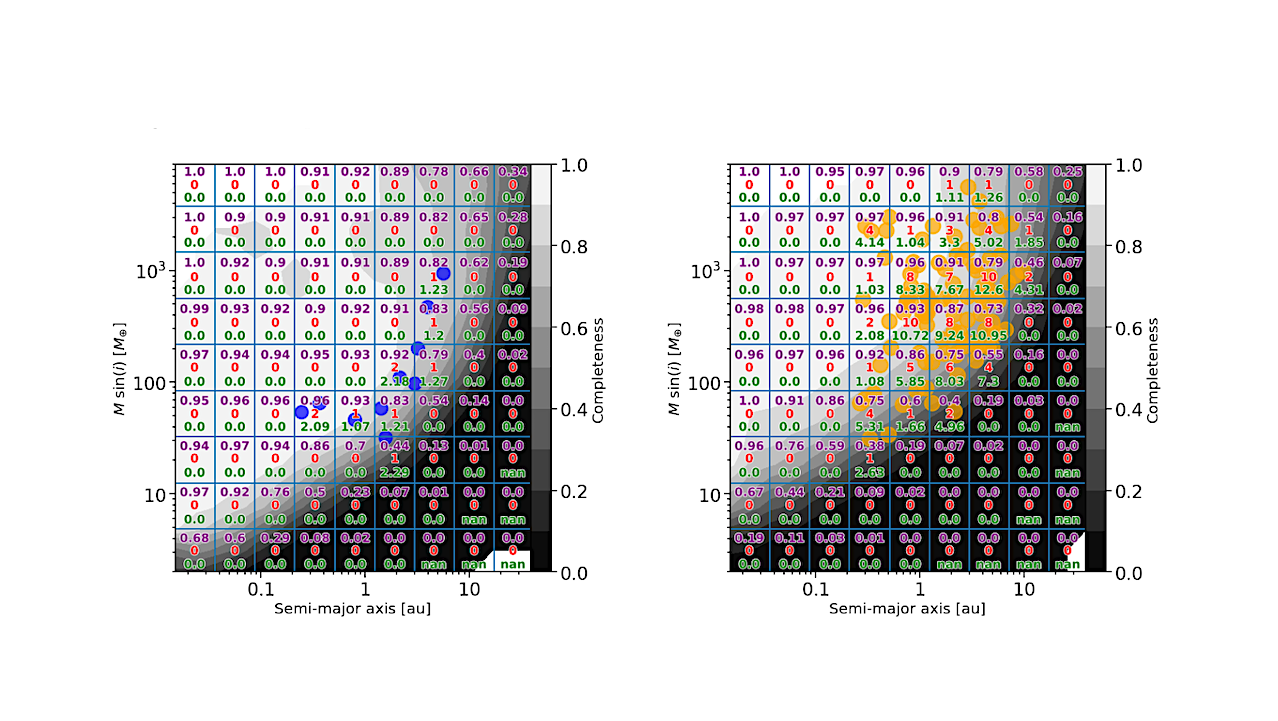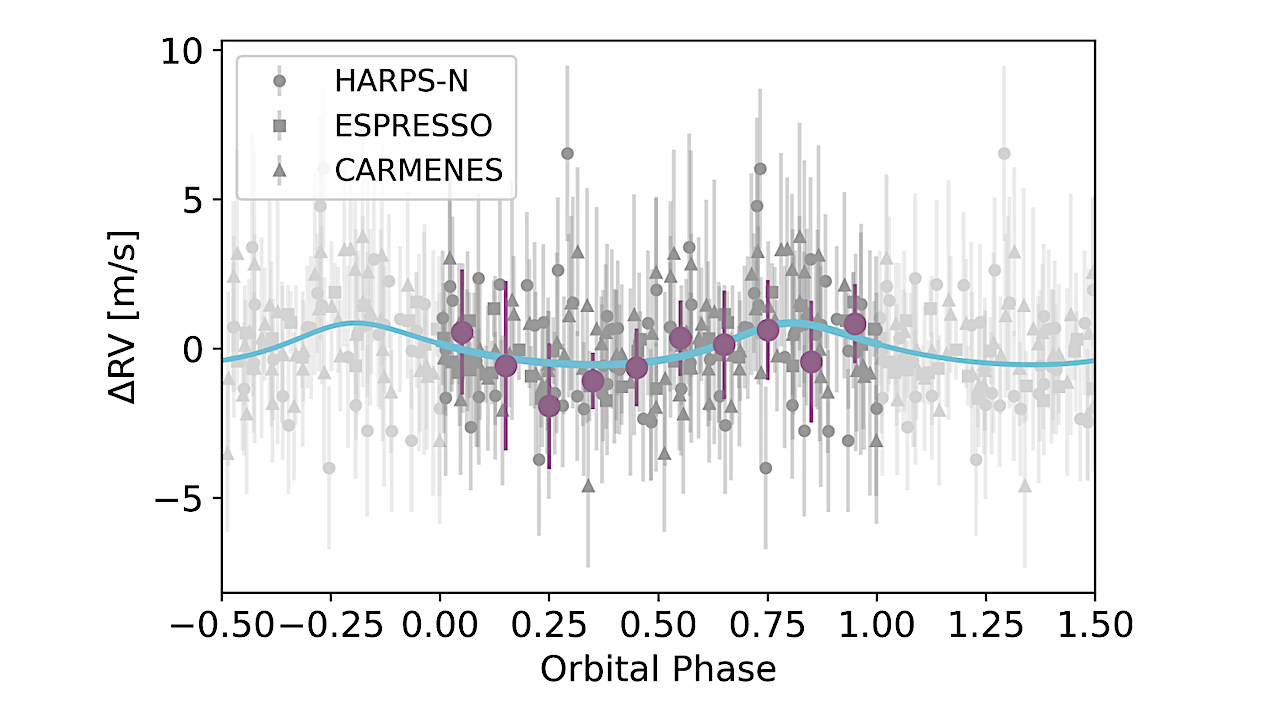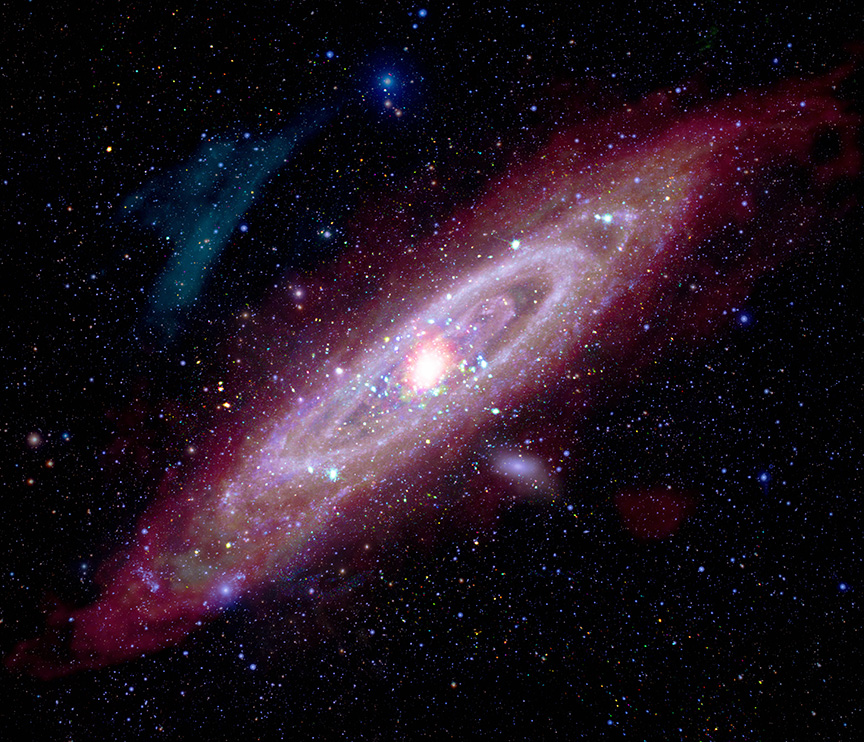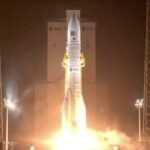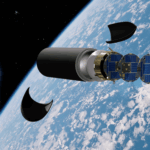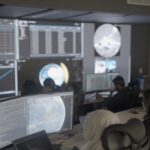Average completeness (purple), number of planets before correction (red) and number of planets after correction (green) inside each bin (blue lines). Blue and orange circles represent cold Jupiters with and
Archive for June, 202512- Page
Phase-folded RVs from the best-fit informed RV model with GPs removed. Binned data shown by the large, purple points (10 bins). Phasefolded on the period of the planet (12.761421 d).
What a terrestrial exoplanet might look like from afar – Astrobiology.com We have surveyed all conventional methods proposed or conceivable for obtaining resolved images of an Earth-like exoplanet. Generating a
The site of the oldest rocks on Earth, 30 km from Inukjuak, in Nunavik, Canada. — University Of Ottawa A team of Canadian and French researchers has confirmed that northern
Adapted from fig. 1.8 of . Modern protein synthesis; the anticodon at one end of a tRNA molecule binds to its complementary codon in mRNA derived directly from the genome.
In the outer reaches of our solar system, far beyond the orbit of Pluto, lies Sedna, one of the most mysterious objects ever discovered. This reddish dwarf planet follows such
Astrophysics Science Video Producer – Goddard Space Flight Center Growing up in Detroit with a camera in her hand, Sophia Roberts — now an award-winning astrophysics science video producer—never imagined
Astrophysics Science Video Producer – Goddard Space Flight Center Growing up in Detroit with a camera in her hand, Sophia Roberts — now an award-winning astrophysics science video producer—never imagined
June 27, 2025 – Washington, D.C.—The Commercial Space Federation (CSF) is pleased to welcome Starcloud and Volta Space Technologies as new Associate Members. These forward-looking companies bring cutting-edge capabilities that
The galaxy next door to the Milky Way, Andromeda, has never looked as stunning as it does in a new image from NASA’s Chandra X-ray space telescope. The image of
-
 012024 in Review: Highlights from NASA in Silicon Valley
012024 in Review: Highlights from NASA in Silicon Valley -
 02Panasonic Leica Summilux DG 15mm f/1.7 ASPH review
02Panasonic Leica Summilux DG 15mm f/1.7 ASPH review -
 03From Polymerization-Enabled Folding and Assembly to Chemical Evolution: Key Processes for Emergence of Functional Polymers in the Origin of Life
03From Polymerization-Enabled Folding and Assembly to Chemical Evolution: Key Processes for Emergence of Functional Polymers in the Origin of Life -
 04How New NASA, India Earth Satellite NISAR Will See Earth
04How New NASA, India Earth Satellite NISAR Will See Earth -
 05And Thus Begins A New Year For Life On Earth
05And Thus Begins A New Year For Life On Earth -
 06Astronomy Activation Ambassadors: A New Era
06Astronomy Activation Ambassadors: A New Era -
07SpaceX launch surge helps set new global launch record in 2024


